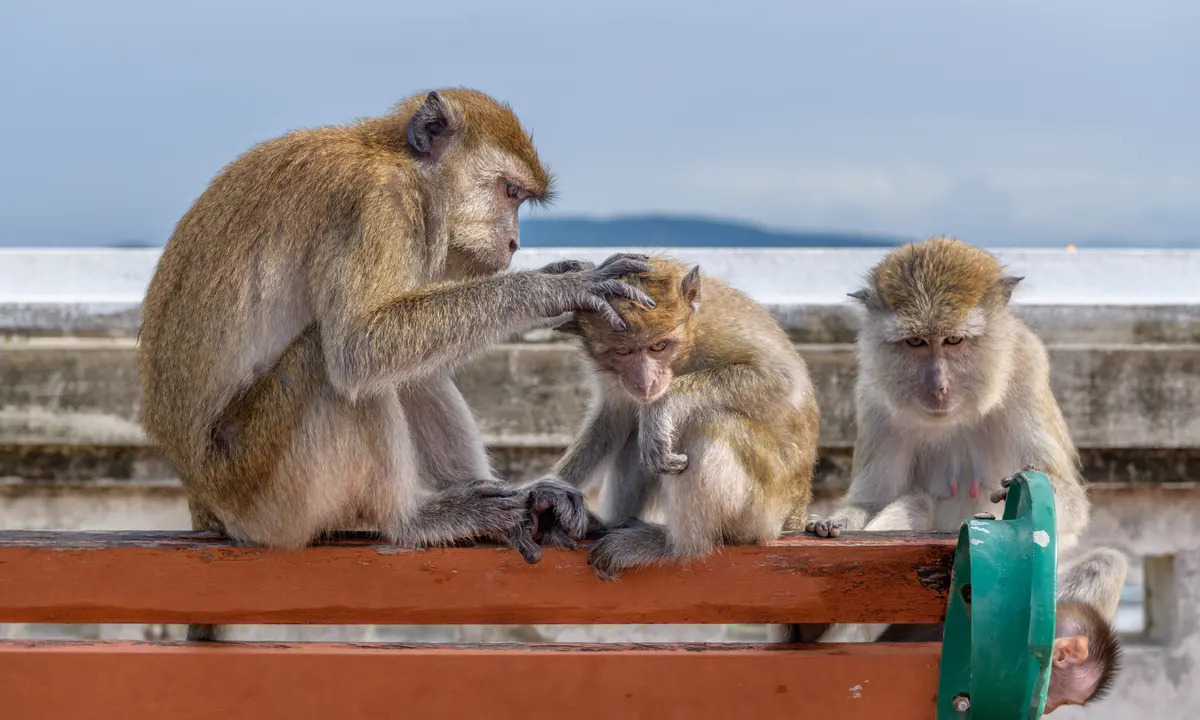Physical Address
304 North Cardinal St.
Dorchester Center, MA 02124
Physical Address
304 North Cardinal St.
Dorchester Center, MA 02124

North East India, known for its rich biodiversity, is a haven for wildlife enthusiasts and researchers alike. Among the diverse fauna that call this region home, the various monkey types stand out as intriguing and charismatic inhabitants.
This article aims to shed light on the different types of monkeys found in North East India, exploring their unique characteristics, habitats, and the importance of their conservation.
North East India boasts an incredible array of primate species, making it a paradise for those fascinated by our closest relatives in the animal kingdom. From the dense forests of Arunachal Pradesh to the tea plantations of Assam, various monkey species have adapted to the diverse ecosystems of this region.
One of the most iconic primates found in North East India is the Hoolock Gibbon (Hoolock hoolock). With its distinctive black or brown fur and expressive eyes, this arboreal acrobat swings effortlessly through the dense canopy. The article delves into the Hoolock Gibbon’s social behaviour, diet, and its crucial role in maintaining the ecological balance of the region.
Venturing into the lowland and hilly areas, the Assamese Macaque (Macaca assamensis) takes centre stage. Known for its adaptability and resilient nature, this species has successfully carved a niche in various habitats, including evergreen and deciduous forests. The article explores the behavioural patterns of Assamese Macaques and the challenges they face in an ever-changing environment.
Moving further into the Northeastern jungles, we encounter the Stump-tailed Macaques (Macaca arctoides). Renowned for their distinctive short tails and impressive arboreal skills, these monkey types navigate the treetops with agility. The article highlights their social structures, feeding habits, and the vital role they play in the ecosystem.
As night falls, a secretive primate emerges – the Slow Loris (Nycticebus spp.). Known for its large, soulful eyes and deliberate movements, this nocturnal primate captivates with its mysterious allure. The article explores the adaptations that make the Slow Loris unique and the conservation challenges faced by this enigmatic species.
Conservation is paramount in preserving the delicate balance of North East India’s ecosystems. This section discusses the various threats faced by monkey types populations, including habitat loss, poaching, and the impact of human activities. Additionally, the article sheds light on the ongoing conservation efforts, emphasising the importance of community involvement and sustainable practices.
Tourism plays a significant role in the economy of North East India. This section explores the potential impacts of tourism on monkey habitats and suggests ways in which responsible tourism practices can contribute to conservation efforts. From ethical wildlife viewing to supporting local conservation initiatives, there are various ways travellers can positively influence the region’s primate populations.
North East India stands as a testament to the incredible diversity of monkey species thriving in its lush landscapes. Understanding and appreciating these primates is crucial for their conservation. By fostering awareness, supporting conservation initiatives, and embracing responsible tourism, we can ensure that future generations have the opportunity to marvel at the beauty and uniqueness of the monkeys that call North East India home.